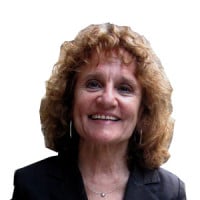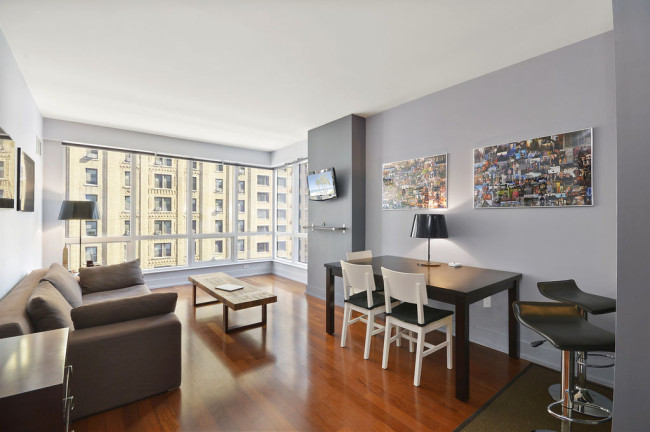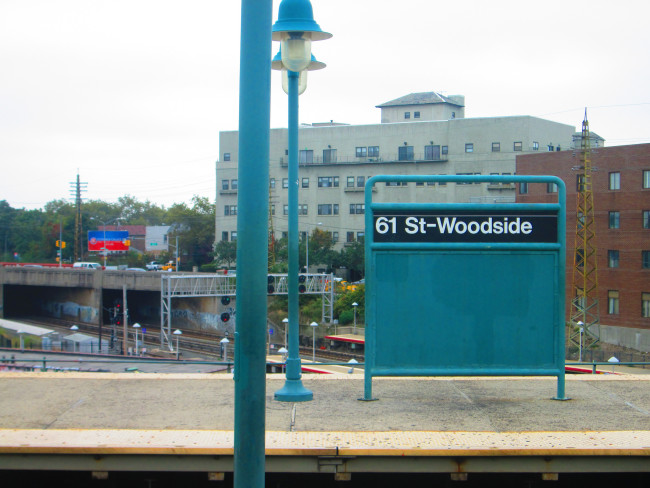Manhattanville's renamed "Factory District" is changing the face of upper Manhattan—here's what to expect
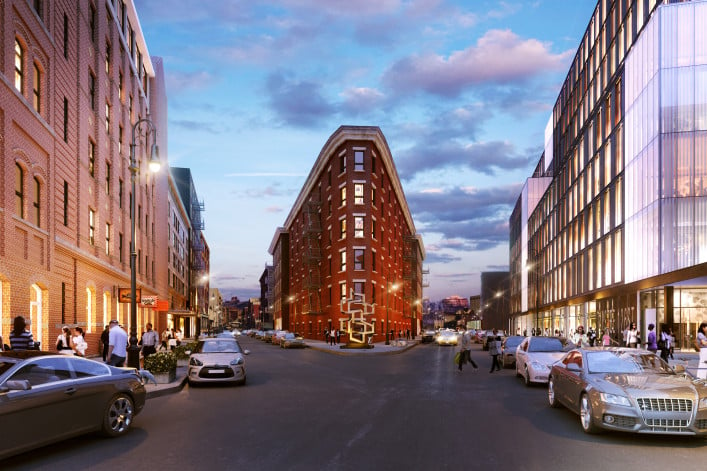
In 1991, Scott Metzner was working on developing affordable housing on Amsterdam Avenue north of 125th Street, and that's when his interest in and enthusiasm for the neighborhood of Manhattanville/West Harlem took hold. What had once been an energetic industrial area humming with activity from prosperous breweries and factories had fallen on hard times. By the end of the 20th century, abandoned buildings with boarded-up windows, crumbling bricks, and missing rooftops were all that was left of a once-prosperous commercial district.
Now, nearly 30 years later, Metzner, founder and principal of the Janus Property Company, is poised to complete the last phase of a plan he is convinced will reconfigure and reinvigorate this once-energetic industrial neighborhood and make it “one of the most exciting places in New York.” He has dubbed the new development, which stretches from West 125th to West 128th, Amsterdam Avenue to Convent Avenue, the Factory District.
Metzner says he doesn’t have any interest in creating what he describes as “ye olde brewery district." He wants his development to be “authentic but modern, to serve and enhance the neighborhood.” So far he has completed the renovation of two of the buildings in his master plan, is close to finishing up on the third, and new construction is about to begin on the fourth. His plans include setting aside space for not-for-profits, artists, and community groups but he says his project is “unabashedly for-profit” and he sees business as a source of good for the community.
Some of Janus’s present tenants include Harlem BioSpace, an incubator for life-science companies; the architectural firm of Gluck +; the African Services Committee (a group that assists immigrants from across the African Diaspora); and AVAC: Global Advocacy for HIV Prevention. The art dealer Gavin Brown has just about finished construction of his permanent gallery space in one of the buildings. Its opening show, featuring the work of performance and video art pioneer Joan Jonas, opened this past weekend.
Serving as connector
Now that Columbia University has established its Manhattanville campus and has begun to put its stamp on the neighborhood (a move that some locals aren't exactly thrilled about), Metzner sees his development as a bridge, a “connection point between Columbia and City College.”
Janus’s promotional materials tout the neighborhood, promoting nearby attractions including the Hudson River Greenway, Fairway Market, the Red Rooster, Harlem Stage Company, Dinosaur Bar-b-que, the Apollo Theater and the new Columbia “no-gate” Manhattanville campus (17 acres where two buildings—the Jerome L. Greene Science Center and the Lenfest Center for the Arts have opened and two more—the University Forum and Academic Conference Center and the Business School will open in 2018 and 2021 respectively. )
How does the community feel about the Janus project? Although a vocal group of preservationists argued for the landmarking of the brewery buildings, in 2016 Community Board 9 voted to recommend that the NYC Landmarks Preservation Commission remove them from its calendar (where it had been for 20 years). The Commission followed through with the Board’s recommendation, citing “unsympathetic alterations” that had been made over the years.
Michael Henry Adams, a fierce fighter for preservation in Harlem, was an outspoken critic of the Board, the Commission’s action, and the developers. In a 2016 interview published in the Huffington Post, he said of the Mink building (see below):
[It] was calendared for consideration as a landmark decades ago. If a developer can thwart a twenty-five year effort to protect a structure so special and historic, through their power and by spreading around cash, then all of the surrounding Harlem is clearly doomed. Every reminder of the past will eventually vanish or become unrecognizable. That’s what’s at stake, that’s why we have a landmarks law and federal tax incentives for preservation: to protect the irreplaceable heritage of the United States and of New York City from capricious destruction.
Mark Levine, who represents the CB9 neighborhood in the City Council, takes the opposite view: “In an area that used to be known for abandoned warehouses, [Scott Metzner] is weaving together an entire new community of small businesses, local entrepreneurs, and non-profits which will be a source of jobs and vibrancy for West Harlem. He has invested more than a decade in building relationships with the broader community, helping to insure that the new district emerging on W. 126th Street will be embraced by its neighbors."
When Metzner began his plan for the neighborhood, he had no idea that Columbia was planning a move to the neighborhood. He laughs as he remembers the time when someone from Columbia’s administration told him that “they’d never cross West 125th Street. Never say never.”
The Mink Building
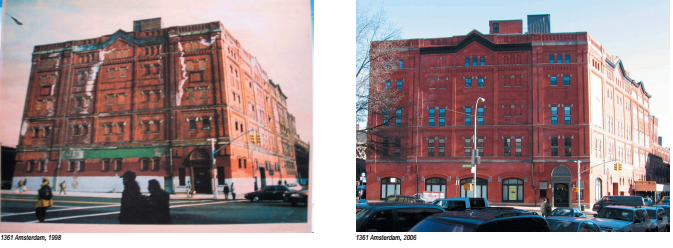
The first building that Janus bought and the first to be developed in the Factory District was the Bernheimer & Schwartz Brewery Complex, now known as the Mink Building at 1361 Amsterdam (the one that was de-calendared by the Landmarks Preservation Commission). “I gave it that name,” says Metzner. Breweries had been located on this site since the early 1800s—”at that time a ‘brewery’ could be a wooden shack and a guy with grain and water.”
There was plenty of vacant land in the area in 1876 when a member of the well-known Yuengling brewing family bought a site to build his own brewery. Metzner describes him as “a wayward Yuengling son” who went into business with a group of “ne’er do well friends.” Not surprisingly, their enterprise was a flop. Bought in 1903 by the fabulously wealthy brewer Simon Bernheimer (those were the pre-OSHA, pre-income-tax days), it operated as the Bernheimer-Schwartz Pilsener Brewery Company until Prohibition intervened.
In 1930, the property, which is on 126th and Amsterdam Avenue, was bought by the Interborough Fur Storage Company to use for storing the furs of wealthy downtown matrons. Some of those furs were still there, rotting inside a crumbling interior, when Metzner bought the property at the end of the 1990s. (Pictured above: The building in 1998 and then in 2006.)
The Sweets Building
The Mink Building was the first phase of the Janus plan and is now fully renovated and rented up as is Phase II, the Sweets Building (pictured below). It's where a New York pharmacist invented Dentyne gum and then distributed it nationally to all of the happy Americans who loved the idea of having a sweet that actually promised to promote better oral hygiene.
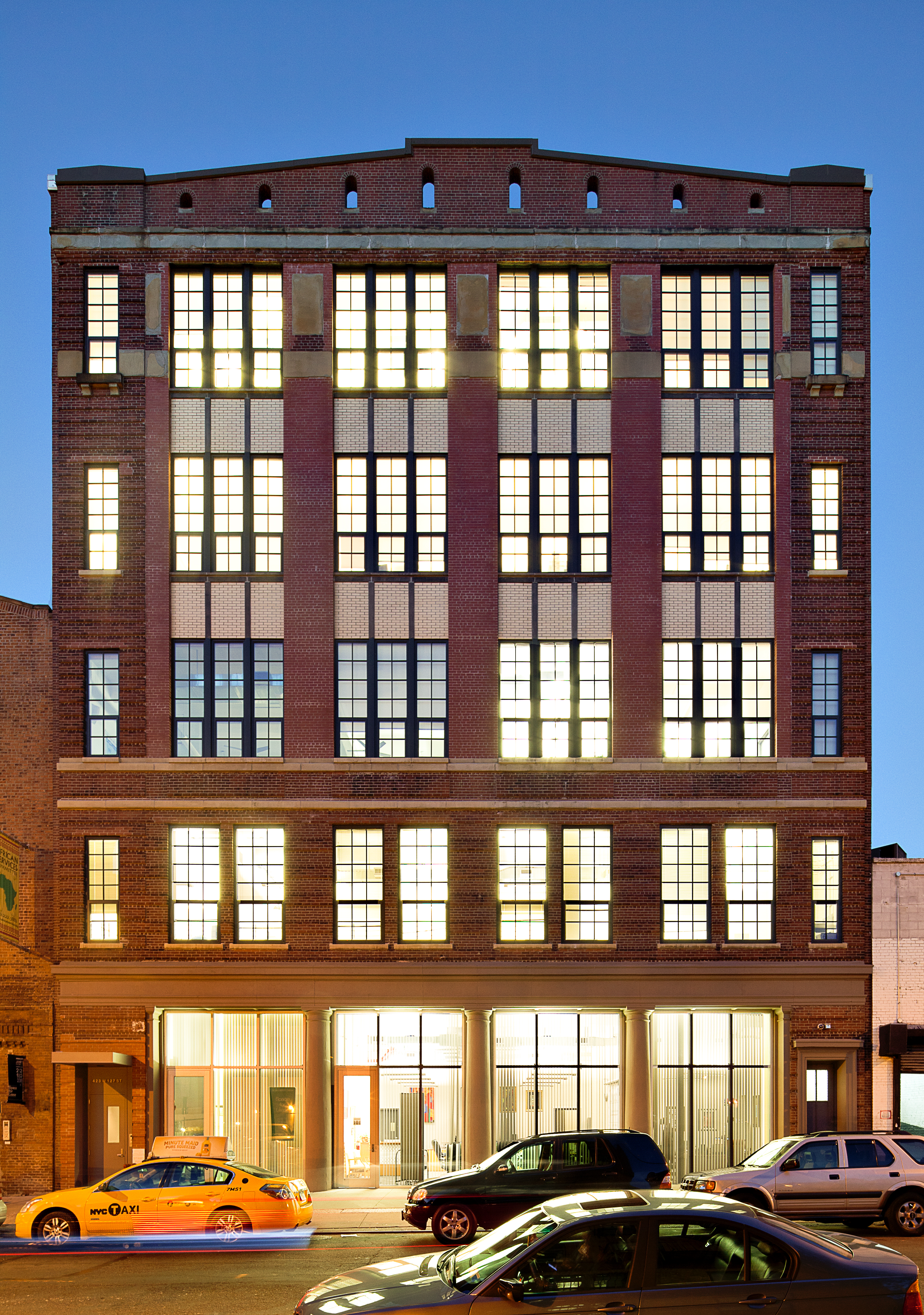
The two final phases
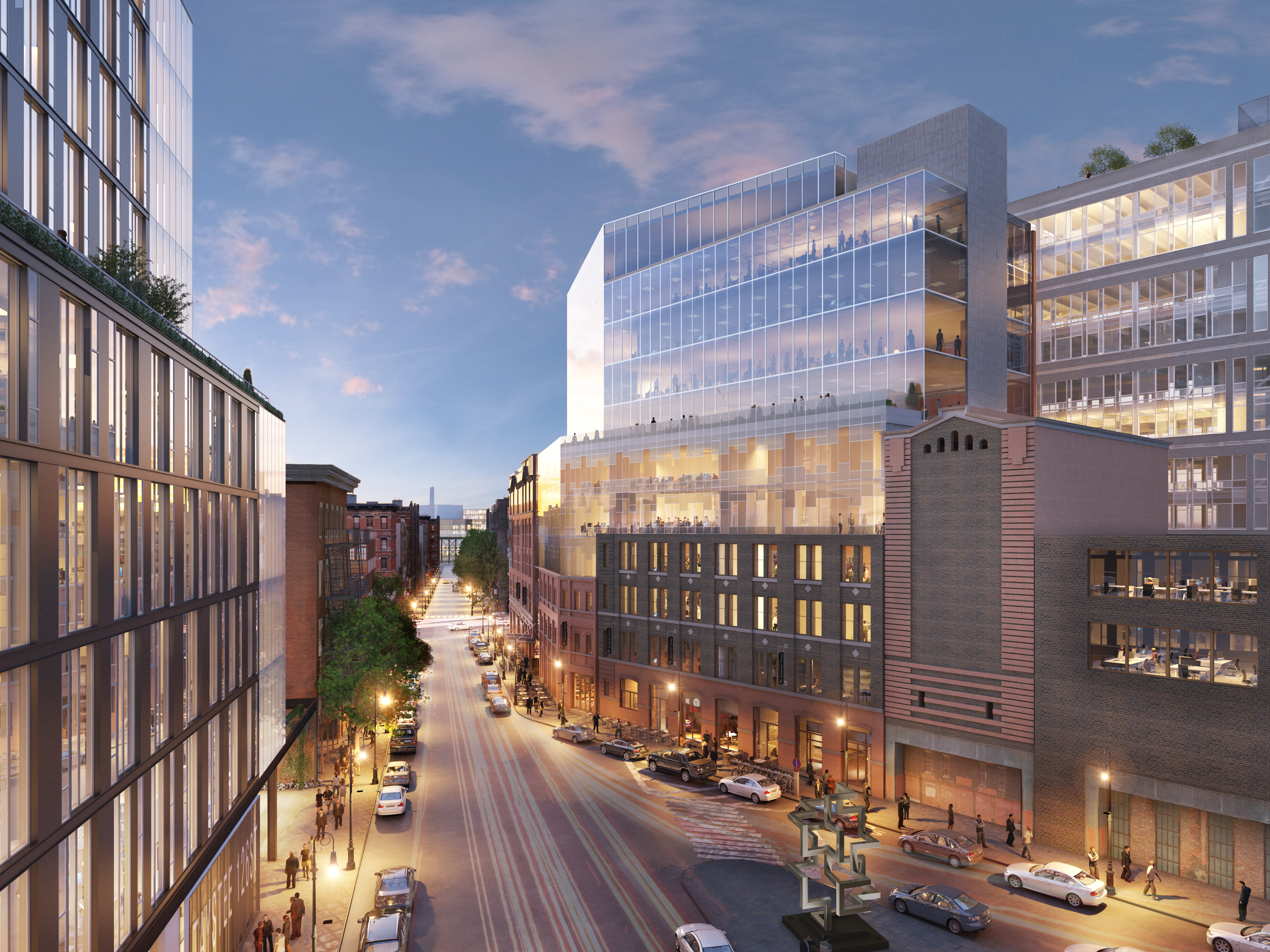
Phase III—the Malt Building (pictured above)—is expected to be completed by the fall of this year. The last and most ambitious piece of the plan—the Taystee Building—now a fenced-in vacant lot awaiting construction—has a hoped-for completion date of 2019. While all of the other buildings in the District were gut renovations, the Taystee Building—a former bakery and distribution hub for the Taystee brand—was beyond saving. In its place a brand new 350,000-square-foot building with floor-to-ceiling glass walls, lots of green space and an “indoor, street level bike concierge” will be built.
Metzner expects that the new building will have the same mix of profit and non-profit tenant groups as the other three —”probably somewhat larger ones because of the layout of the building."
The green spaces that Metzner envisions, where the public will be able to stroll, sit and socialize, will begin at the Taystee Building. In designing the street space and walkways, he says that his company looked at how the horses and buggies used to go in and out of the area and how the courtyards of the buildings were laid out during the manufacturing phase of the neighborhood—"then” Metzner says, “ we put it all on steroids," he said.
When asked whether the Factory District has had any impact on the residential real estate market—both rentals and purchases—Halstead broker Vivian Ducat, says she found it interesting that the new district has yet to be mentioned prominently in real estate ads, and that "you do not even see the new Columbia Manhattanville campus being added [in descriptions of listings nearby]. I think the brokers aren't coming up or maybe since the workforce is not in place yet, either at Manhattanville campus or the Factory District, it is not seen as relevant to real estate yet."
But, she adds, she has noticed sales prices in Morningside Gardens [a co-op located a few blocks north of Columbia’s original campus and a few blocks south of the new one], going up "dramatically," but she "assume(s) that is because of the new Columbia campus more than the Factory District.”
You Might Also Like
















